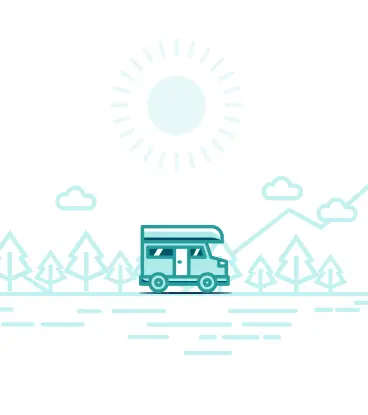
Salmon - From Birth, to Sea, to Spawning Grounds

[Transcript]
The Fascinating Journey of Salmon
Alright, it looks like we're just about five minutes away from our stop at Salmon Cascade's overlook. So, let's talk salmon. This iconic symbol of the Pacific Northwest not only plays a vital role in native cultures but also in the health of the ecosystem.
As for the salmon themselves, well, they live quite a fascinating life. Let's dive into their story. The life of a salmon begins in fresh water.
The Journey Begins: From Egg to Fry
During the autumn months, a female lays her eggs in a nest of gravel way upstream. The male then fertilizes the eggs, which will remain tucked away under gravel all winter long while the embryos develop. Then in the spring, newly hatched salmon, called alevins, emerge from the eggs.
They hang out in the gravel and keep growing until they're ready to leave their nest and enter the fry stage. Depending on the type of salmon, the fry can spend up to a year swimming around in their home stream, eating plankton and small insects, growing and hiding from predators. Until one day, Mother Nature tells them it's time to ship out.
That's when they begin the long trip downstream toward the sea. During this journey to the ocean, their bodies begin to change in a process called smolting, which means they adapt to salt water. Then, if they're lucky enough to avoid being eaten, the smolts eventually wind up in the estuary or the river mouth, where their bodies continue to adapt to the saltier water.
And finally, they enter the ocean. As adults, salmon spend anywhere from one to seven years at sea, traveling hundreds or even thousands of miles to get to their feeding grounds. But then, at some point, it's time to spawn.
Finding Home
So, they make the whole journey again, this time in reverse. But just how do they know where to go? We're still figuring that out. Scientists believe the salmon follow a trail of scents, chemical cues, or maybe even the sun to find their homestream.
But one way or the other, the salmon make it happen. Once they hit fresh water and start the homeward journey, the fish stop eating. Now, all their energy goes into swimming upstream and making it back to where they were born, and hopefully, where their children will be born.
It is an exhausting journey, and to succeed, they have to swim against strong currents, leap up waterfalls, and elude predators and fishermen, all on an empty stomach. But getting there's only half the battle. The lucky ones who do make it have to find mates.
Males fight off suitors and court the females before settling down to business. The female builds a nest, and then together, they spawn some eggs. And once the eggs are safely tucked away into their cozy gravel nests, both parents keel over and die.
Legacy of Life
Their epic journey ends in exhaustion. Incredible, isn't it? But just as their story ends, the eggs hatch, the babies leave their nests, and the cycle begins again. Now, what about all those adult salmon after they die? Won't that pollute the river? Well, strangely, it's the opposite.
Once their bodies begin to decompose, their carcasses supply the river with vital nutrients like phosphorus, nitrogen, and carbon. And these nutrients help keep this water, and the wildlife who depend on it, healthy for future generations. Now, that's quite a legacy.

























 to fuel your ride
to fuel your ride 
